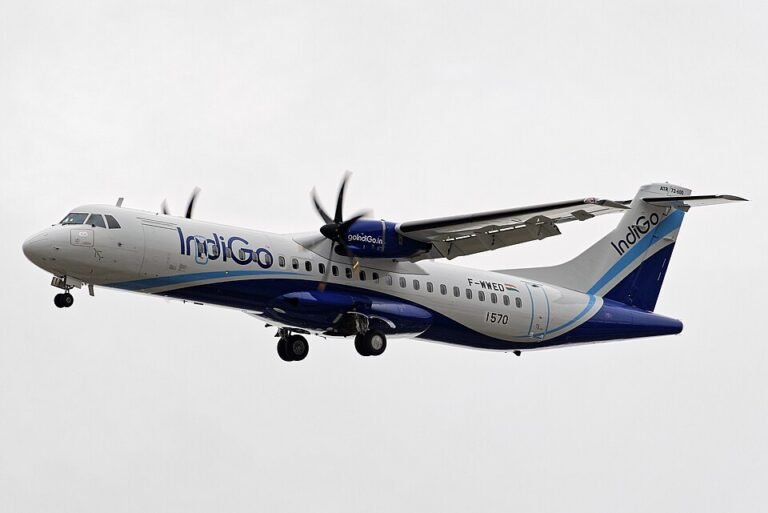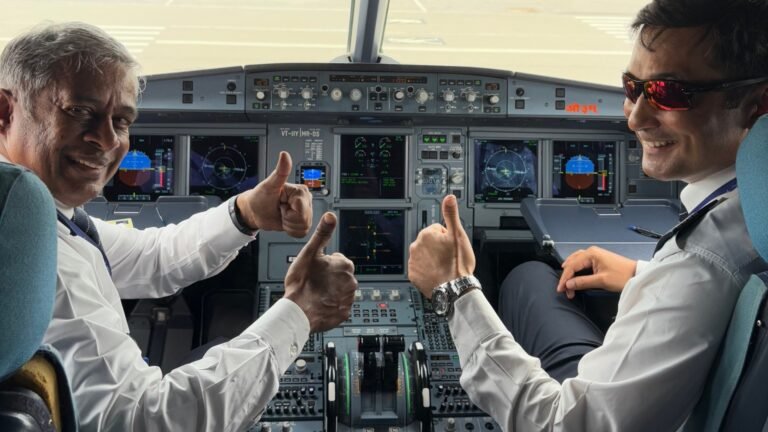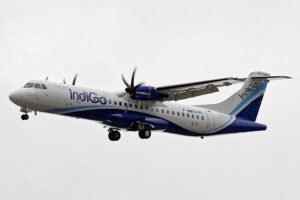Picture Credits: China Science (X)
Beijing, CHINA: In a major milestone for China’s aviation industry, the AG600, the world’s largest and heaviest amphibious aircraft has officially received its type certificate from the Civil Aviation Administration of China (CAAC), clearing the way for commercial deliveries and deployment. The certification was conferred during a formal ceremony at the Beijing headquarters of the Aviation Industry Corporation of China (AVIC), the aircraft’s developer and the country’s leading aerospace manufacturer.
The AG600, developed under stringent civil aviation airworthiness regulations, is China’s first large civil special-purpose amphibious aircraft and a critical component of the nation’s broader push to enhance its emergency rescue and disaster response capabilities. The aircraft’s approval marks a landmark achievement in China’s civil aircraft manufacturing and the special-purpose aviation sector, reflecting its growing self-reliance in the development of large-scale aviation systems.
Unprecedented Capabilities
With a length of 38.9 meters, height of 11.7 meters, wingspan of 38.8 meters, and maximum takeoff weight of 60 tons, the AG600 is larger than mainstream single-aisle airliners such as the Boeing 737. It can operate both on land and water, boasting a range of 4,500 kilometers, a cruise speed of 220 km/h, and a service ceiling of 7,600 meters.
Designed for diverse missions including firefighting, maritime patrol, search and rescue, logistics, and artificial weather modification, the aircraft can scoop and release up to 12 tons of water in just 20 seconds, enough to douse a fire across 4,000 square meters. It is also capable of rescuing up to 50 people in a single maritime mission.
According to AVIC, the AG600 represents a versatile platform adaptable for future applications such as ocean environment monitoring, law enforcement, and inter-island transportation. Its amphibious capabilities make it especially useful in complex terrains and disaster-prone regions across China.

Picture Credits: China Science (X)
Engineering Excellence
The aircraft features a unique hybrid design, a ship-bottom hull with wave suppression grooves for marine operations and a conventional upper fuselage for flight. Large wingtip floats ensure stability during water taxiing, while its integrated avionics, fly by wire controls, and pressurized cabin align with modern aviation standards.
Development began in 2009 following central government approval, with the first prototype completed in 2016. The AG600 made its runway debut in Zhuhai in 2017, followed by a reservoir takeoff in 2018 and a sea-based test flight over the Yellow Sea in 2020. A total of four prototypes completed 2,167 test flights amounting to 4,931 flight hours across regions such as Guizhou, Sichuan, Hainan, and Inner Mongolia.
The development program involved contributions from 292 enterprises, 16 universities, and participants across 22 provinces and cities, making it one of the most collaborative aviation projects in China’s history. The program set new performance benchmarks for China’s civil aircraft airworthiness certification, including the establishment of independent testing and compliance verification standards for amphibious aircraft.

Picture Credits: China Science (X)
Market Prospects and Future Vision
AVIC has already secured six orders from two domestic buyers, with production certification expected by August 2025 and first deliveries projected for October. Ongoing discussions with local governments and commercial operators signal growing market interest in the aircraft’s capabilities.
Aviation expert Wang Yanan noted the AG600’s strong commercial viability in forest monitoring, emergency rescue, and low-altitude economic activities. “Its deployment will enhance China’s aviation competitiveness and open new avenues for the civil aviation market,” Wang said.
Though designed for civilian use, the AG600’s ability to transport personnel and supplies to remote islands suggests strategic utility, particularly in the South China Sea region. If deployed from Hainan, it can reach most Chinese-held territories in the area within four hours.
This development also positions China ahead of the United States in amphibious aircraft capabilities. The U.S. retired its last seaplanes decades ago, with no recent revival of similar programs.
As AVIC aims to continue refining and expanding the AG600 aircraft family, China cements its standing as a formidable innovator in large-scale aeronautical engineering and emergency aviation technology.
Stay tuned to Aviation Today for the latest Aviation News!





















